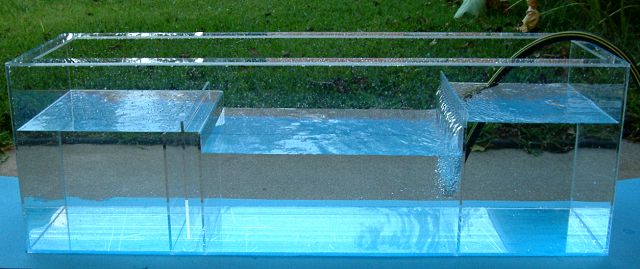A Canfield
New member
Just about ready to get my sump built but I have a few questions..........
What, if any, are the pros and cons for the following designs:
Dimensions right now are 42x20x16
skimmer-return-fug or skimmer-fuge-return.
I'm planning on running a external return pump, mainly because of heat issues(going to try and get by without a chiller)
Skimmer is internal. I'm anticipating alot of fans, so alot of evaporation.
Any ideas, tips, etc... would be greatly appreciated!!!
Thanks
Anne
What, if any, are the pros and cons for the following designs:
Dimensions right now are 42x20x16
skimmer-return-fug or skimmer-fuge-return.
I'm planning on running a external return pump, mainly because of heat issues(going to try and get by without a chiller)
Skimmer is internal. I'm anticipating alot of fans, so alot of evaporation.
Any ideas, tips, etc... would be greatly appreciated!!!
Thanks
Anne

